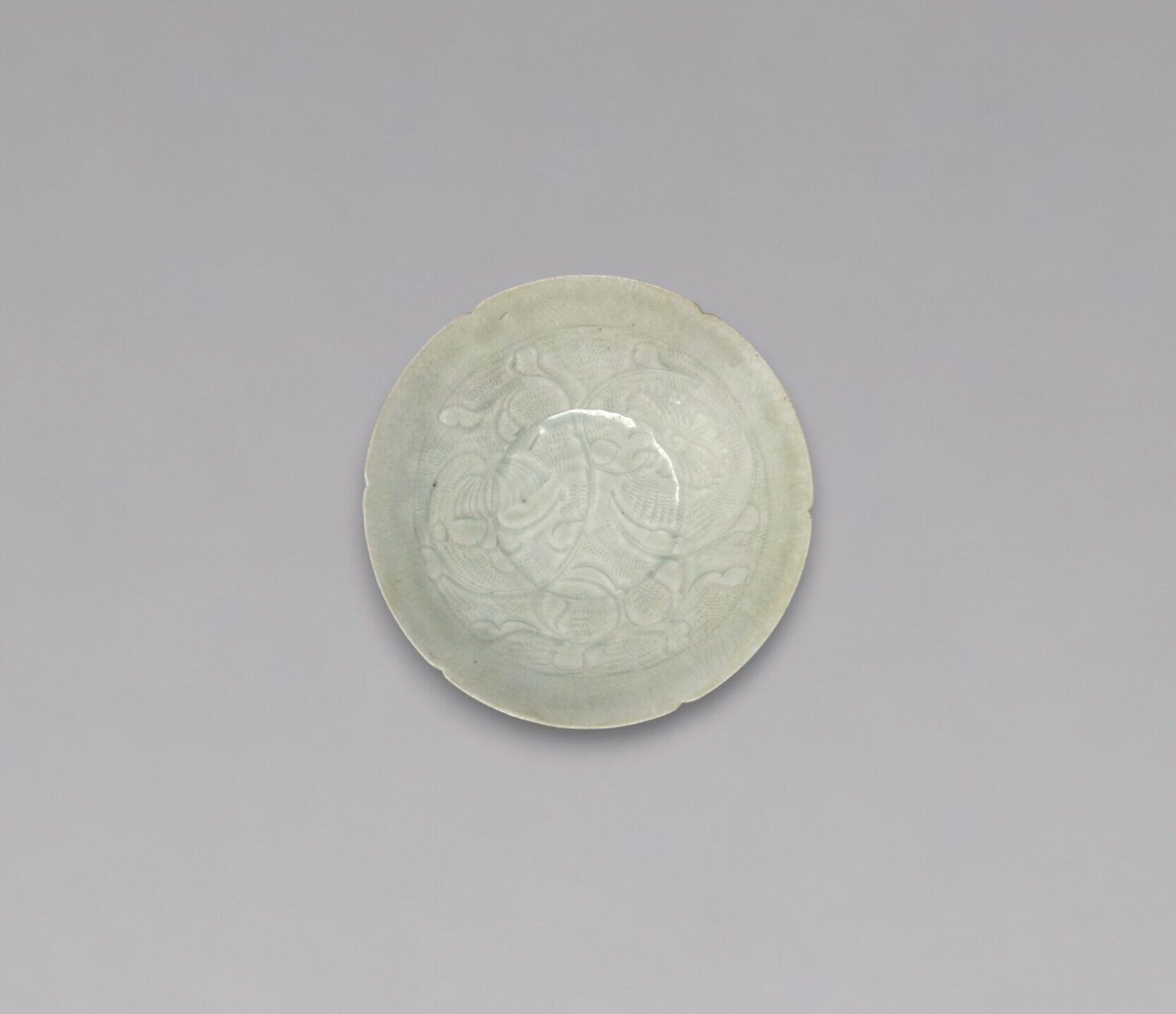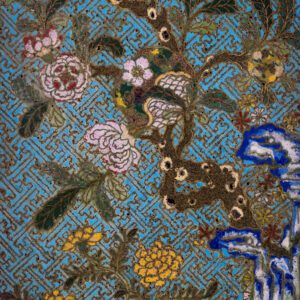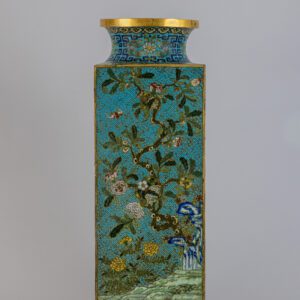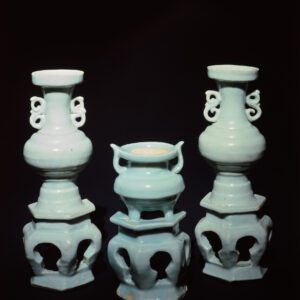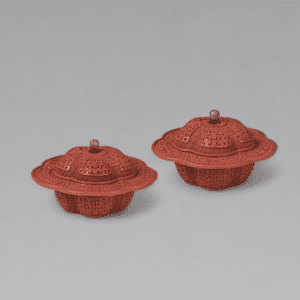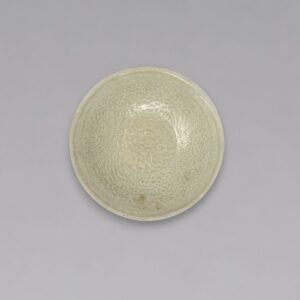Elegantly potted with a gently rounded body rising from a short, slightly splayed foot to a subtly lobed rim, the interior crisply moulded with radiating chrysanthemum petals emanating from a central medallion, the exterior echoing the same petal form. The translucent glaze of pale bluish-green tone with a faint crackle pools delicately within the recesses, shading to a warmer hue along the rim, and revealing the fine white porcelain body beneath. The foot left unglazed to reveal the brownish-red body.
A lobed Qingbai chrysanthemum bowl (Southern Song dynasty, 1127-1279)
Description
Dimensions: 17.7cm diameter
Provenance:
A private Scandinavian collection
Elegantly potted with a gently rounded body rising from a short, slightly splayed foot to a subtly lobed rim, the interior crisply moulded with radiating chrysanthemum petals emanating from a central medallion, the exterior echoing the same petal form. The translucent glaze of pale bluish-green tone with a faint crackle pools delicately within the recesses, shading to a warmer hue along the rim, and revealing the fine white porcelain body beneath. The foot left unglazed to reveal the brownish-red body.
The earliest Qingbai wares emerged from the kilns of Jingdezhen in Jiangxi province during the late 10th century, distinguished by their delicate, translucent bodies and cool, pale-blue glazes that pooled softly in carved recesses. Produced in low, elegant forms, these early examples laid the foundation for a tradition that flourished throughout the Song dynasty (960–1279) and remained highly esteemed into the Yuan (1279–1368). Production gradually waned during the Ming period (1368–1644), when the pure white tianbai—or ‘sweet white’—wares came to prominence.
While the earliest Qingbai forms were confined to simple bowls and dishes, by the mid-Northern Song period the repertoire had expanded considerably to encompass a rich variety of vessels and accoutrements for daily and ritual use—ewers, boxes, incense burners, granary models, vases, jars, sculptural figures, cups and stands, water droppers, lamps, tomb wares, and implements for writing and painting. Many of these shapes drew direct inspiration from earlier metalwork and lacquer. As Jessica Rawson has observed, the imitation of silver appears to have been a defining aesthetic impulse in the evolution of white wares, of which Qingbai remains among the most refined and lyrical expressions.
